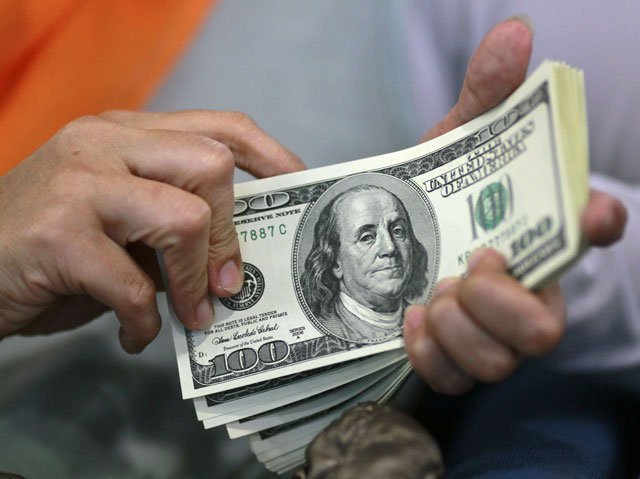By Omar Qureshi
Published in The Express Tribune on November 14, 2021
KARACHI: The remittances sent home by overseas Pakistanis surged 10.2% in October 2021 to $2.5 billion on a year-on-year (YOY) basis owing to measures taken by the Government and the State Bank of Pakistan (SBP) to encourage the use of formal channels to send money home. According to the data released by the SBP on Sunday, the inflow of remittances had stood at $2.3 billion in the same month last year.
“In addition to staying above $2 billion since June 2020, this is the eighth consecutive month when remittances have been close to or above $2.5 billion,” SBP said in a statement.
“Proactive policy measures by the government and SBP to incentivise the use of formal channels and altruistic transfers to Pakistan amid the pandemic have positively contributed towards the sustained improvement in remittance inflows since last year.”
However, the inflows declined 5.7% on a month-on-month basis as they had amounted to $2.67 billion in September 2021. Speaking to The Express Tribune, Ismail Iqbal Securities Head of Research Fahad Rauf said that the trend of remittances has remained robust for the past few months.
“While regional countries witnessed a drop in remittance inflows in the last few months, Pakistan recorded a sustained uptrend in receipts,” he enthused, adding that the current number was encouraging for economic managers of Pakistan.
Speaking about the month-on-month decline, he pointed out that a slowdown in growth was being witnessed due to resumption of cross border travel in the world. However, he held firm hope that Pakistan would record receipt of $30 billion from overseas Pakistanis in full fiscal year 2021-22.
Echoing his views, Pak-Kuwait Investment Company (PKIC) Head of Research Samiullah Tariq stated that the month-on-month decrease was a seasonal phenomenon and increase in number of foreign flights had capped remittance flow.
During the first four months of the ongoing fiscal year (July-October 2021), remittances rose 11.9% to $10.6 billion on a year-on-year basis. The country had received $9.4 billion in the same period of the previous fiscal year.Country-wise figures
According to the SBP, Pakistanis based in Saudi Arabia sent the largest number of remittances at $655.4 million in October 2021, which was 3.25% higher than $634.8 million received in the same month last year.
The amount sent home by expatriates in the United Arab Emirates (UAE) registered a decrease of 10% to $456 million in October 2021. Inflows from the Middle Eastern nation had amounted to $504.1 million in the same month last year.
Pakistanis in United Kingdom managed to send $346.7 million home in the month under review compared to $278.5 million in the same month last year, an increase of 24.5%. Remittances sent home by overseas Pakistanis residing in the United States climbed 26.4% last month as they amounted to $231.8 million against $183.3 million in the same month last year.
Receipts from the Gulf Cooperation Council (GCC) countries other than Saudi Arabia and UAE inched up 4.7% to $285.6 million. The amount received from the region had stood at $272.8 million last year. Pakistanis in the European Union (EU) sent 43% higher remittances in October 2021 as the inflows amounted to $291.1 million against 203.2 million in October 2020.




